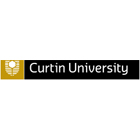Bachelor of Applied Science (Architectural Science)
Bachelor of Applied Science (Architectural Science)
Architecture combines creative practices of architectural design with the cultural, social, technical and sustainability issues of the built environment. In this course you will study the relationship between the natural and constructed environment, the architectural proposition and the occupation of space. This degree is taught by academic staff, industry practitioners…
Categories
COURSE DESCRIPTION
Architecture combines creative practices of architectural design with the cultural, social, technical and sustainability issues of the built environment.
In this course you will study the relationship between the natural and constructed environment, the architectural proposition and the occupation of space.
This degree is taught by academic staff, industry practitioners and guest lecturers, and is a pathway for the two-year accredited Master of Architecture qualification.
Curtin’s architecture students benefit from valuable industry experiences. For example, design company GHDWoodhead and government entity Water Corporation have both provided hands-on design opportunities to Curtin students.
Curtin students have also enjoyed opportunities to work with key industry consultants such as Woods Bagot, Cox and Hassell.
Professional recognition
To pursue a career as an architect in Australia, you must be registered with the relevant state’s Architects’ Board. Curtin’s accredited Master of Architecture program, when combined with relevant professional experience and successful completion of the Architectural Practice Examination, fulfils one of the pathways to registration.
Career information
Careers
Building consultant
Draftsperson
Architect*
* After completing the Master of Architecture.
Industries
Building and construction
Local Government
Further Study
Master of Architecture
What you’ll learn
Demonstrate an understanding of the broad discipline of architecture, its theoretical underpinnings, and ways of thinking; the ability to apply specific discipline knowledge contained within the streams of Architectural Design, Science and Technology, Architecture and Culture and Design Communication
Think critically, creatively and reflectively in order to analyse and understand the diverse needs of various parties involved in architecture in order to generate and create innovative solutions
Conduct appropriate scholarly and professional research to access and analyse the diverse information needed to make informed, strategic design decisions
Communicate information and ideas to diverse audience through visual, verbal and written communication techniques
Demonstrate ability to recognise and understand the principles of a range of appropriate technologies and their suitable application within the discipline of architecture
Possess a sustained intellectual curiosity that constantly strives, through self-directed learning, for innovation within the profession of architecture
Have an awareness and ability to synthesize a range of local, national and international issues and perspectives which influence architecture
Understand and value cultural and physical diversity and appreciate its significance in the creation of architecture
Demonstrate a rigorous and ethical approach in the creation of architecture; the ability to work independently and in teams
REQUIREMENTS
Students from different countries should have qualifications equivalent to Australian Year 12 and a scaled mark of at least 50 in English, Literature, or English as an Additional Language or Dialect.
IELTS (International English Language Testing System) – Listening, Reading, Writing, and Speaking – 6.0; Overall band score 6.5; TOEFL Score: 79 (overall); Reading 13; Listening 13; Speaking 18; Writing 21; Pearson Test of English – Listening, Reading, Writing, and Speaking – 50; Overall band score 58; TOEFL (Test of English as a Foreign Language) and PBT (Paper Based Test) – 570 and 4.5 in TWE; C1 Advanced Formerly known as Cambridge English: Advanced (CAE) 176 with 169 in Reading, Writing, Listening and Speaking. C2 Proficiency Formerly known as Cambridge English: Proficiency (CPE) 190 with 176 in Reading, Writing, Listening and Speaking.
EDUCATIONAL INSTITUTION
Curtin University is Western Australia’s largest and most culturally diverse university with Australia’s third largest international student population. Around 60,000 students from more than 130 countries study a Curtin degree, at locations including Perth, Margaret River, Kalgoorlie, Sydney, Malaysia and Singapore. Our cultural diversity adds a rich and valuable dimension to the campus atmosphere, preparing all graduates to live and work effectively in an increasingly global environment. We offer a range of industry-aligned undergraduate and postgraduate courses in business, humanities, health, engineering and related sciences. We also have a long-standing focus on Aboriginal and Torres Strait Islander education and culture, supported by our Centre for Aboriginal Studies.Curtin is widely recognised for its practical research that is focused on solving timely, real-world problems. In recent years our research activity has grown significantly, driving our rapid rise up the international university rankings.As a university that never settles, we will continue to develop existing partnerships and establish new ones in areas relevant to our research and teaching.




